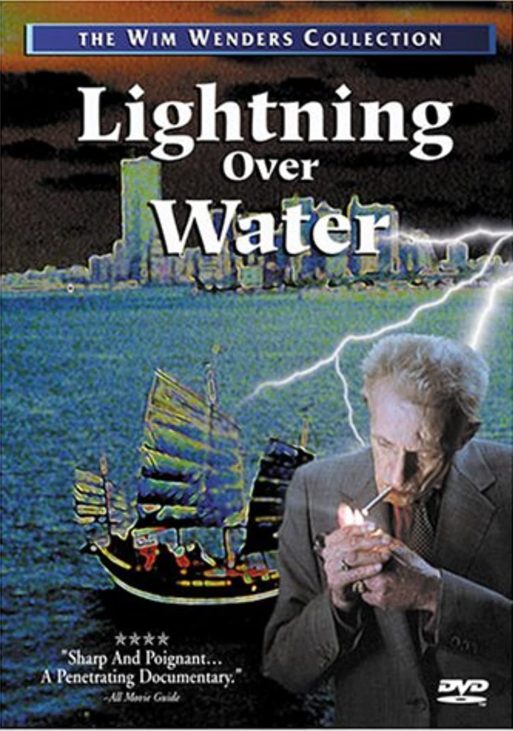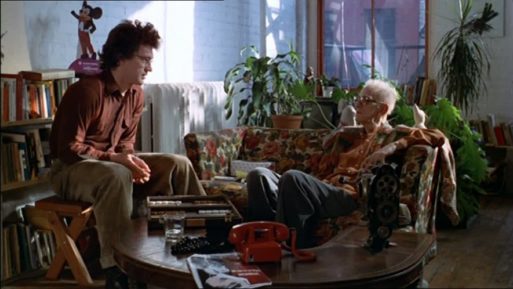 “Lightning Over Water” is a moving documentary about the final two months of cult film director Nicholas Ray’s life as he loses his battle to cancer. In April of 1979, Ray’s longtime friend and fan, much younger German director Wim Wenders, took a few weeks off pre-production of his own 1983 film, “Hammett,” to fly to New York to visit Ray, who had recently undergone several operations for cancer. Ray was eager to complete one last film before his death. So, upon Wenders’ arrival, Ray proposed that the two make a film together.
“Lightning Over Water” is a moving documentary about the final two months of cult film director Nicholas Ray’s life as he loses his battle to cancer. In April of 1979, Ray’s longtime friend and fan, much younger German director Wim Wenders, took a few weeks off pre-production of his own 1983 film, “Hammett,” to fly to New York to visit Ray, who had recently undergone several operations for cancer. Ray was eager to complete one last film before his death. So, upon Wenders’ arrival, Ray proposed that the two make a film together.
Initially, Ray wanted the film to be a narrative about a dying painter who sails to China in search of a cure for his disease. Wenders and Ray discussed the idea, but it became apparent that the state of Ray’s health was too poor for such an undertaking. Ray suggested that the film could instead be a documentary about his final days: his attempt to die with grace and his reflections on his work cinema, family and his life at large.
Initially Wenders was reluctant, hesitant about exploiting Ray’s suffering for the sake of a film. But Ray assured Wenders that the film would not be exploitative, so the documentary was made. It was shot with a small crew, mostly in Ray’s modest New York City apartment, where he lived with his wife Susan, 40 years his junior. It incorporates conversations between Ray and Wenders about the younger film maker’s fears around the making of Hammett along with clips from Ray’s films “The Lusty Men” (1952) and “We Can’t Go Home Again” (1976). It also includes footage from Ray’s last lecture, presented at Vassar college, about his films.

A scene from “Lightning Over Water” shows Wenders and an emaciated Ray chatting in the filmmaker’s living room
Credit: IMCDM.org
“Lightning Over Water” is often a disturbing film to watch, as scenes of Ray’s cancer ravaged body unsettle and sometimes shock. It is also, however, both touching and informative. One one hand, it’s an interesting portrait of an artist with a real creative zeal for his medium. On the other, it’s a moving tribute to one artist by another who clearly looked up to him. Wenders’ admiration and love for Ray speak through the documentary, and leave the viewer deeply moved.

 “Lightning Over Water” by Wim Wenders
“Lightning Over Water” by Wim Wenders



 The Other Death in the Family
The Other Death in the Family















